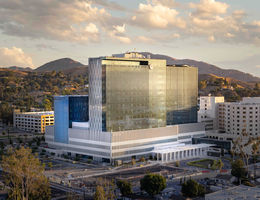We’re Stronger Together
With your help, we can make ambitious innovations in clinical care and education for our community.
Our program offers exposure to a wide variety of patients including a private university teaching hospital, Veteran's Hospital, and underserved communities. Our training encompasses a broad spectrum of experiences including high risk patients with advanced interventional needs. Our hospital had advanced experience with structural cardiology and the ability to train our fellows with advanced procedures.
Our curriculum is carefully structured to provide a well-rounded and rigorous educational experience that prepares our fellows for a successful career in interventional cardiology.
Our multidisciplinary approach includes:

Loma Linda University Medical Center
Our new 16 story hospital is a 320-bed facility with state-of-the-art catheterization laboratories, echocardiogram, and advanced imaging facilities. Our medical center serves an area roughly equal to 25% of the state of California. As a tertiary care facility, the center commonly receives patients with unusual or complicated medical conditions. There is an active medicine service, cancer center, intensive care unit, and coronary care unit.
With your help, we can make ambitious innovations in clinical care and education for our community.